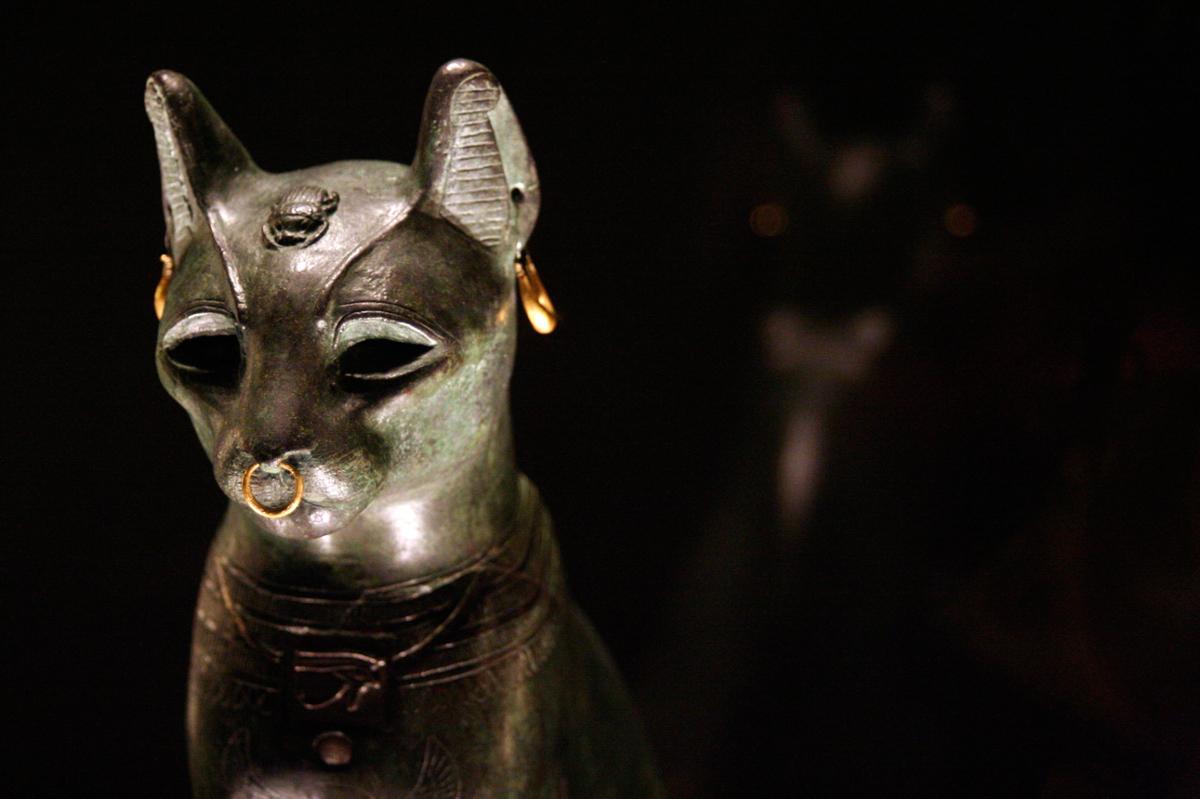Y: Exciting news, Don: I got a cat! I just took her home, but she’s already prancing around like she owns the place.
D: I hope it works out for you, Yaë1. But her queenly attitude isn’t surprising; we’ve been hanging out with cats for almost 10,000 years! A grave in Cyprus from 7500 BC shows a furry feline and human owner buried together. It’s the oldest known site of a tame cat.
Y: True, but it was wild cats who really “self-domesticated.” Around the time of the Cyprus grave, they started hunting rodents in the Near East agricultural permanent settlements that were starting to form.
D: Though did you know that we have the Ancient Egyptians to thank for making those fierce predators into the house pets they are today? While they weren’t the only people who helped domesticate cats, they were keeping them nearly 6,000 years ago. You can see the path from working animal to beloved creature in their art, where cats are first depicted as hunters. But eventually, cats get placed in domestic scenes, and even become associated with royalty and the gods.
Y: Well, it’s not just art that shows this path through Egypt. One study performed a genetic analysis on the skeletons of over 200 cats who lived between the ancient world and the 1800s. They looked at mitochondrial DNA to trace the spread of different subspecies. Though one subtype was popular in Turkey, another one was found in Egypt. This subtype quickly spread from Egypt to the rest of the world, likely due to the popularity of these cats as pest-control agents and human companions.










